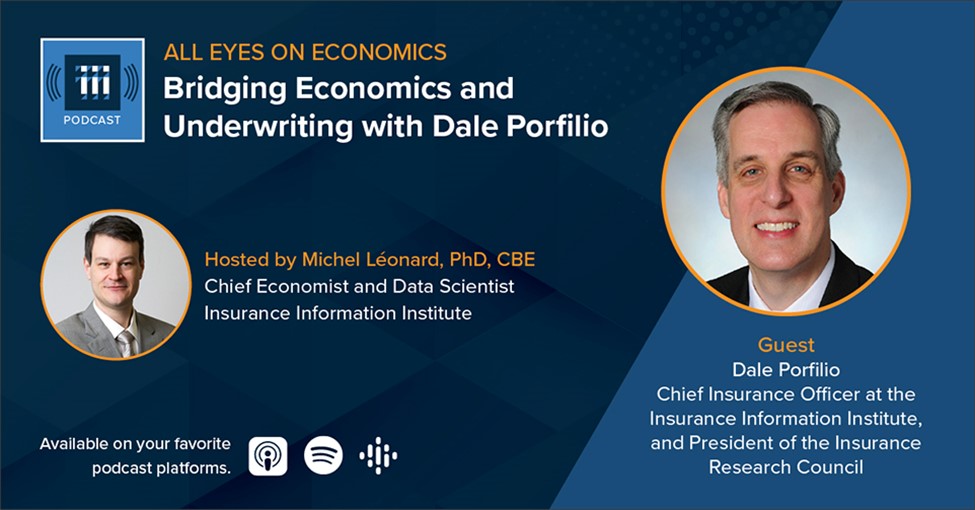
By Lewis Nibbelin, Guest Blogger for Triple-I
Insurance underwriting and pricing require a clear view of loss experience and reliable economic projections. Today’s dynamic environment – marked by historically high inflation, climate-related risks, and regulatory constraints that vary widely by state – complicate such projections while making them more important than ever.
“Actuarial ratemaking is prospective in nature, but you have to look at history to be able to do that,” explained Dale Porfilio, Triple-I’s Chief Insurance Officer and President of the Insurance Research Council (IRC), in an interview for the All Eyes on Economics podcast. “A core part of that actuarial ratemaking is to say, ‘How are losses different? How have they trended? How are they going to grow?’”
Current economic uncertainty – particularly via rising replacement costs and high general inflation – presents a myriad of evolving factors many actuaries may struggle to contextualize.
“It just takes a while to get through the timeline of claims occurring and losses getting paid,” Porfilio told host and Triple-I Chief Economist and Data Scientist Dr. Michel Léonard. “We can already be in a cycle of increasing or decreasing inflation, and you won’t see it in losses yet… You’re going to see it faster from economic indicators than you’re going to see it in insurance.”
For economists and actuaries alike, projections are data-driven inferences. Using multiple data sources and various forms of sophisticated analysis all strengthen the precision of those inferences.
For example, IRC – like Triple-I, an affiliate of The Institutes – is developing a database that aggregates detailed personal auto injury claims information from numerous insurers. It encompasses five and a half years’ worth of data on not only the total claim payout, but the specific injuries and care within each claim file.
A database of this magnitude has the potential to help insurance carriers improve the accuracy of pricing and underwriting. More important, this research will help policymakers and carriers identify opportunities to reduce claim costs, which can improve the affordability of personal auto insurance.
Ultimately, synthesizing diverse perspectives reduces the role of luck for insurers when setting rates.
Triple-I works to provide a “combined wisdom,” Porfilio said, through the quarterly Insurance Economics and Underwriting Projections: A Forward View, a joint report with Milliman. The report presents an underwriting projection model which – by using P/C replacement cost indices and economic growth data as leading indicators – is both actuarially and economically sound.
Understanding economic trends is crucial, but understanding how risk influences these trends is equally important. Ongoing geopolitical risk, for instance, continues to strain global supply chains, and integrating this information into underwriting projections is one way to build resilience against disruptions.
“Learning to speak as an economist or an actuary is another language,” Porfilio said, and resources such as Triple-I’s Chart of the Week serve to simplify the sharing of economic research for insurers and consumers.
This wealth of available data analysis ensures that “our best pick is our last pick,” Porfilio said. “We’re always putting our best answer on the page to share the best insights that we can…and educate and inform as wide of an audience as possible.”
The full interview is available now on Spotify, Audible, and Apple.

